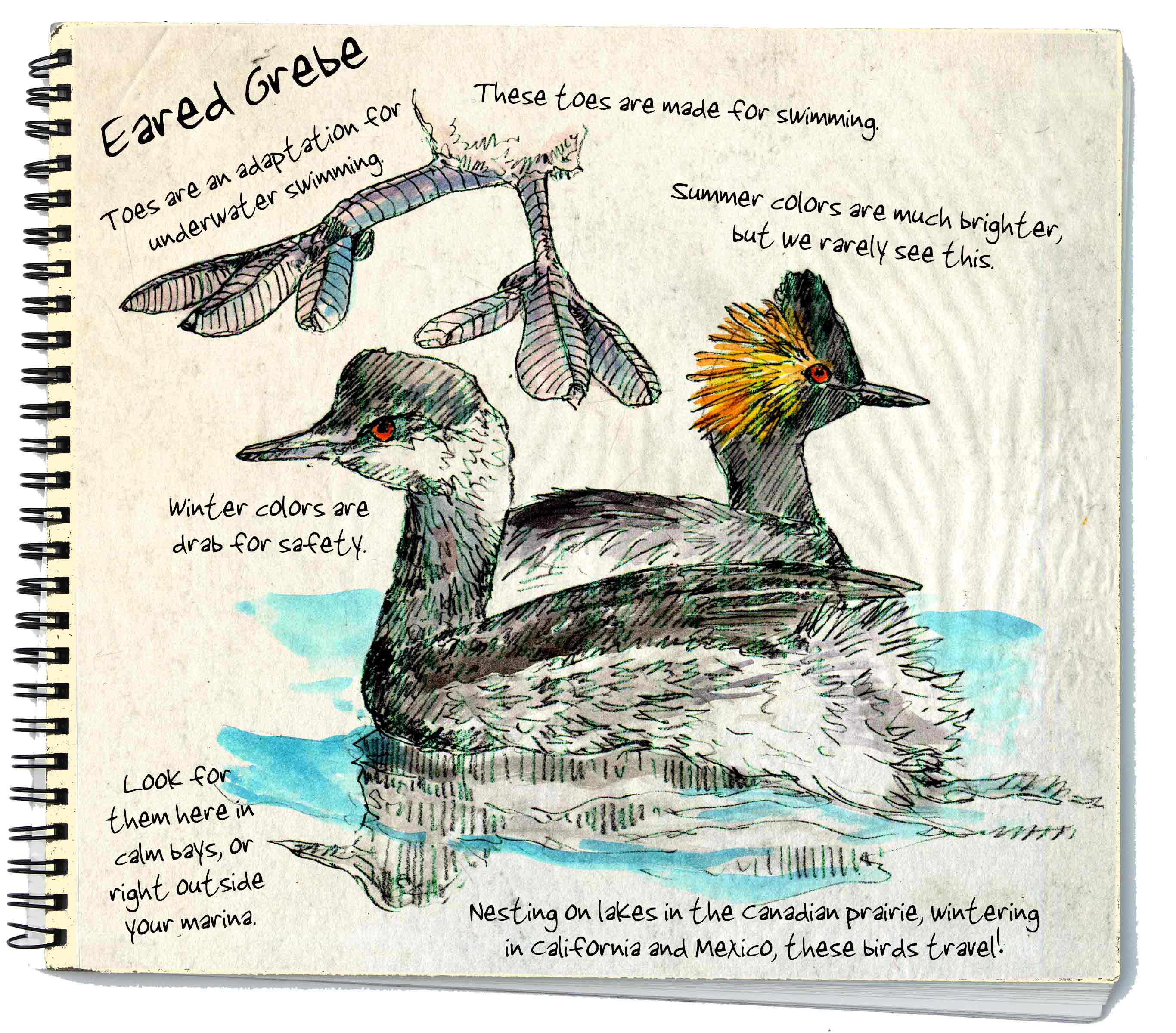
Eared grebes visit the Salish Sea in fall and spring as they transit between summer nesting and wintering areas. They nest in the Canadian prairie lakes east of the Rocky Mountains, then head south to California and Mexico for the winter months. You can find individuals or pairs in most shallow bays through spring as they work their way back home in the far north. Breeding birds have brilliant orange heads and you may see a few like this now. We have other species of migrating grebes here now as well, pied-billed, western and horned – but this one is the most abundant overall – and I think the most interesting. I especially like the feet, an evolution in propulsion worthy of writing about.
So, what’s with the feet? These birds make their living diving for small fish and insects. During migration many feed on brine shrimp in desert lakes. To get around underwater, they use their feet (some divers use their wings), and so birds with bigger feet would do better – a great example of evolution in the real world. Notice how their toes have enlarged in width along with stout legs. As they gorge themselves on brine shrimp, chest muscles contract so they can’t fly, while digestive organs grow to handle the food intake. This goes on for months, longer than any other bird capable of flight. It’s just like a sailboat, isn’t it? Shorten sail when it’s foul, hang it all out there when it’s favorable.
Larry Eifert paints and sails the Pacific Northwest from Port Townsend. His large-scale murals can be seen in many national parks across America, and at larryeifert.com.